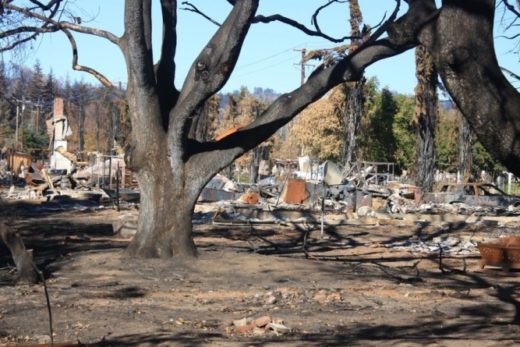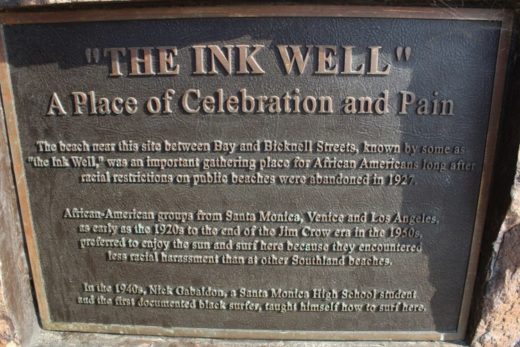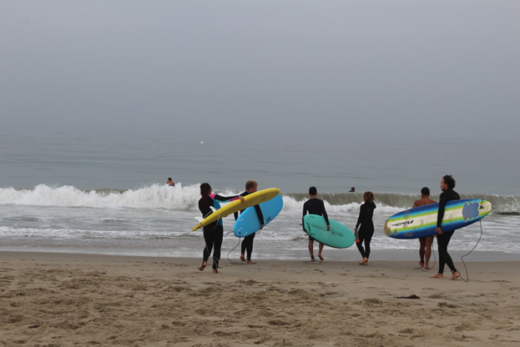California has a long-established political geography history that has surprised and puzzled pundits and alternately frustrated and delighted liberals and conservatives on all sides of the spectrum. More recently, the state has gained a general reputation as a bastion of progressive and Democratic dominance. But it hasn’t always been that way and the current political map is much more complicated, exposing a geographically polarized state that resembles our nation in some ways.
More recently, our state’s political leaders have begun to reflect its evolving, diverse demographics. It might seem safer to avoid what some consider contentious or uncomfortable topics within this project that embraces objectivity and attempts to educate a wider range of people. But, within such a tumultuous political atmosphere, these trends, maps, and people have earned our attention and we responsibly garner the courage to explore them here.
Every Election is Different and Significant
Though the 2020 presidential election demanded our attention, we recognize how every recent statewide election has changed our state in profound ways. Partly because California’s four-year-term elections for governor remain perfectly out of sync with Presidential elections, we conduct consequential elections (that also include the House of Representatives, critical statewide initiatives, and local elections) every two years. Still, voter turnouts are much more impressive during higher-profile presidential elections that include many of those other down-ballot choices. In contrast, voter participation can plummet by between 11-30% during gubernatorial election years. This is one reason why savvy political experts and advocates are careful to time their preferred candidates and ballot measures to coincide with the election cycles most likely to attract likeminded, sympathetic cohorts.
Clear Trends from the 2020 Presidential Election
Eligible Californians showed up in record numbers to vote in the November, 2020 presidential election. Voter turnout soared to 80.7% in 2020 compared to 75% in what was already considered a dramatic 2016 election. And though the energy and emotions topped any memorable election, the statewide outcomes settled into familiar, ongoing patterns in 2020. These results reflect a state’s total population that leans toward Democratic and progressive candidates, but trends more moderate on the many statewide initiatives, or propositions. And there continues a clear divide between the two Californias. This is most evident when comparing more progressive and Democratic coastal cities to the more conservative and Republican communities father inland, especially in rural northern and eastern California. We’ve analyzed this chasm in previous research and stories within this project and web site, but here is the latest evidence.
The 2020 Presidential election was a statewide landslide by any measure, as Democrat Joseph Biden gained 63.5% of the vote compared to Republican Donald Trump’s 34.3%. But, Biden’s dominance in the usually progressive coastal cities faded as we work our way mostly inland and to the north. Trump voters dominated in the more extensive rural regions of the state. More than 11 million Californians voted for Biden and only about 6 million voted for Trump. The Secretary of State’s map shows a more even visual split since more conservative, Republican-dominated counties tend to be larger in area, but lower in population.


Your Perceived Political Incompatible May be Closer than You Think
Some of the most astounding political differences are recognized in surprisingly close proximity. For instance, some Bay Area counties where Biden dominated over Trump, such as Marin (82% for Biden to 16% for Trump), San Francisco (85% to 13%), and Alameda (80% to 18%), are only about 100 miles, or less than a two-hour drive west of counties where Trump dominated over Biden. These include Amador and Calaveras Counties; Trump won them both by 61% to 37% and he also won in the counties to their north and south. Perhaps the most extreme example of how these rural/inland regions differ with the urban/coastal regions was in more distant and extensive Lassen County, where Trump beat Biden by 75% to 23%, but less than 12,000 people voted.
Now we can examine another map (below), built by Dr. Jing Liu. She also uses the California Secretary of State’s presidential election data, but displays much more detail. Watch the ratio of blues and reds change in the pie charts as you sweep from west to east and back again. Her map suggests more gradual political geography trends, rather than rigid boundaries.

Issues and Initiatives Make More Complicated Maps
Results from 2020 statewide initiatives suggest a more moderate to conservative electorate as they rejected some progressive causes. As example, Proposition 15 would have made some changes to the landmark and historic Proposition 13 of 1978, which limited annual tax increases on California properties. The old Prop 13 eventually forced statewide budget-cutting that included schools and educational programs until our state, ranked near the top before it passed, plunged much lower on the list of states in per-student spending during the following years. So, the new Proposition 15 was written to continue those property tax controls for homeowners and zoned commercial agriculture, but to adjust higher-valued commercial and industrial property taxes to reflect their market values rather than their purchase prices. It became a classic battle between big property owners that included giant corporations with massive real estate holdings in California, versus citizens and labor unions and teachers, who believed the largest landowners were reaping the greatest rewards from an old initiative designed to benefit the average homeowner.
Tax Policies Versus Education and Services
Opponents of the new Prop 15 saw a giant tax increase for large businesses that threatened to run them and their industries and jobs out of the state; supporters saw it as closing a big loophole to make an outdated and flawed initiative more fair. Put more simply, some big businesses would be the losers and schools and local governments the winners. Combining both sides, more than $120 million was spent in campaigns to convince voters on this one initiative in a state where politics was already a big, expensive business of its own. This may help explain why Prop 15 lost, but it was close. Initiative voting results show a state still divided, but with a slight majority of voters leaning toward the more conservative and pro-business arguments presented by opponents.
Deceiving Maps Tell Compelling Stories
The Secretary of State’s map showing these results is even more fascinating. It first appears that Proposition 15 was rejected by a resounding landslide, rather than the thin 52% “no” vote to 48% “yes” vote. But again, the counties most enthusiastically rejecting the initiative were mainly larger and more sparsely populated. These relatively conservative counties cover a much larger percent of our state’s land surface, but they usually do not include the densest populations where the numbers add up fast over very small areas. So, the final vote tallies were a lot closer than this map might suggest. It’s yet another illustration of how California, like the nation, shows its divisions that can ebb and flow, sweeping to and fro across the state in various forms, depending on the candidate, issue, or initiative.


Now we can examine Dr. Jing Liu’s map (below) that uses similar data made available from the state. Notice how much more detail she placed into this one attractive map without making it appear cluttered. You can now see the percentages of votes for each county. A map like this one suggests that there are many more important stories to tell about the electorate. We can also see from this map that winning and losing percentages are wildly different in each county.

California’s Diversity Erupts on to the National Stage
Millions of Californians have compelling personal stories that demonstrate the diversity of our state and contribute to our political geography. Here are a few leaders that you have either heard of, or that have shaped your state and your world without your knowledge.
A History of Political Diversity
The Golden State has elevated its share of political philosophies and candidates that have changed the nation and the world; we mentioned a few in our publication. It has been a wild political roller coaster ride since statehood. We sent conservative Republicans Richard Nixon and Ronald Reagan (a former Hollywood star who served two terms as governor) on to become presidents. We elected a range of powerful and sometimes controversial governors, personalities who often grew on to the world stage and others who sometimes grew away from steadfast partisanship and toward more pragmatic leadership during their terms. Some would argue that these might include Democrat Jerry Brown, who served two terms twice (1975-1983 and 2010-2018), becoming our longest-serving governor in history, as he gained a reputation for fiscal prudence; and there’s the Austrian-born celebrity body-builder-turned-movie-star Republican Arnold Schwarzenegger, who jumped into a bitter political recall atmosphere as a staunch conservative, but exited in 2011 as a champion of many environmental causes. Since politics should encourage healthy debate, we welcome and respect your well-informed opinions about which personalities and policies could be highlighted here. But we can all agree that the state’s political landscapes and leaders are changing to match today’s demographics and cultures.

What Pio Pico and Kamala Harris have in Common
Pio Pico was an established leader and the last Mexican Governor of an already very diverse California. He finalized the secularization of the missions and later became a U.S. citizen after the American conquest. He was a native Californian, a “Californio” with a mixture of Native American, Spanish, and African ancestry, who reflected the diversity and mixed racial backgrounds typical of many Californios in the 1800s. Fast forward to the 21st Century and the most diverse state with no ethnic majority; enter Kamala Harris. Her mother migrated from India and her father from Jamaica, but they quickly established solid reputations in California as successful leaders in their professions.
Harris was born in Oakland and raised in Berkeley. She earned her law degree from the UC Hastings College of the Law in San Francisco. She served as District Attorney of San Francisco and would eventually be elected and reelected to serve as California’s Attorney General (as the first female and African American in this office) from 2011-2017. Kamala Harris was elected U.S. Senator in 2017 to replace retiring Barbara Boxer and to continue the two-decades-plus long dominance of women Democrats from the Bay Area (including Diane Feinstein) representing California in the U.S. Senate. In 2021, this modern-day mixed racial native Californian became the first woman, African American, or Asian to serve as Vice President of the United States.
The Door Opens for a New Kind of Senator
When Kamala Harris moved up and on to Washington D.C in 2021, Governor Gavin Newsom fulfilled his duties to temporarily fill the U.S. Senate seat vacancy by selecting Secretary of State Alejandro Padilla, another Democrat. He was born in Los Angeles. Senator Padilla’s parents emigrated from Mexico and raised their kids in a working class part of the San Fernando Valley. He was eventually educated at MIT and trained as an engineer, but he was elected to the L.A. City council in 1999 as their youngest member. He served three times as L.A.’s first Latino Council President and was later elected to the California State Senate until he was elected Secretary of State in 2015. Packing such a resume by 2021, Alex Padilla became the first Mexican American or Hispanic to represent California in the U.S. Senate.
California’s AG Goes to Washington
Xavier Becerra was elected as California’s first Latino Attorney General and served as the state’s top law enforcement officer starting in 2017, following Kamala Harris. He was born in Sacramento and was the first in his working-class family to earn a college degree, which eventually included a Bachelor of Arts from Stanford and Juris Doctorate from Stanford Law School. He served in the State Assembly and was later elected to 12 terms in the U.S. House of Representatives before his tenure as California’s Attorney General. President Biden tapped him to head the U.S. Department of Health and Human Services in 2021, leaving another vacancy in this state where a fresh crop of leaders were gaining valuable experiences and graduating on.

The Most Powerful Woman in a Divided House
These recent leaders we have sent to the Senate and the President’s Cabinet continue a long tradition of powerful influencers lifted to the national stage from California, and that is especially true in the House of Representatives. As a recent example, Nancy Pelosi has represented San Francisco’s 12th District for more than 30 years. In 2007, she was the first woman to be elected Speaker of the House and she has been leading Democrats in the House of Representatives ever since. She has often been considered the most powerful woman in America, gaining praise from supporters, but scorn from her mainly Republican detractors who label her as a liberal progressive. She beat her opponent (another Democrat) by more than 55 percentage points in her 2020 reelection and resumed her tenure as House Speaker in 2021. In that election, according to the Center for Responsive Politics, her campaign committee raised more than $27 million compared to her opponent’s approximately $1.7 million. Here is where we recognize that it would be difficult to imagine American leaders with more wildly conflicting politics and philosophies than California’s representatives in the House. And you can blame much of it on the geography we examine here.

Digging in Their Heals in the San Joaquin Valley
Consider the conservative Republican districts that are evident in the southern San Joaquin Valley. Kevin McCarthy has represented California’s redrawn 23rd District in the House of Representatives since 2007. He was born in Bakersfield and earned his BS and MBA at California State University, Bakersfield. As a 4th generation resident of Kern County, he was reported to be the first Republican in his immediate family and has a long history as a staunch conservative in the Republican Party.
He served as minority leader in the California State Assembly before his election to Congress. He eventually served as House of Representatives Majority Leader for five years until 2019 and has been House Minority Leader since then. His district that is mainly in Kern and Tulare Counties is considered one of the most conservative Republican strongholds in the nation. He has gained a reputation as a prodigious fundraiser, thanks to backing from powerful business interests. Encouraged by his constituents, he also earned a reputation as one of President Donald Trump’s most enthusiastic and loyal supporters through some of the most tumultuous and controversial political struggles in U.S. history. This included his support to challenge the 2020 Electoral College votes and Trump’s attempts to reverse those election results. Kevin McCarthy won reelection to the House in 2020 by beating his Democratic opponent by more than 24 percentage points. The Center for Responsive Politics reported that his campaign committee raised nearly $28 million just for his 2020 campaign, while his opponent raised less than $2 million.

From the Farm to Washington
Right next door is redrawn Congressional District 22, where Congressman Devin Nunes has represented the traditionally more conservative Tulare and somewhat less conservative Fresno counties since 2003. He was born in Tulare into a family with Portuguese ancestry. He grew up on his family’s dairy farm there and earned his bachelor’s and master’s degrees in agriculture from Cal Poly San Luis Obispo. He has served as Chair of the House Intelligence Committee.
Most folks from any political persuasion would consider Nunes one of the most conservative members of the House, and like McCarthy, he has earned his reputation as a controversial firebrand. Some of his views and most famous quotes have included dismissing scientists and the seriousness of the COVID-19 pandemic; he was also considered one of President Trump’s most ardent supporters. The media and even some of his Republican colleagues panned him for attempts to interfere with ongoing legal investigations and for his loyal support of President Trump’s conspiracy theories. He also voted to toss out voting results from the 2020 election. But Devin Nunes won reelection in 2020 over his Democratic rival by more than 8 percentage points. According to the Center for Responsive Politics, his campaign committee fundraising totaled about $27 million for his 2020 reelection, compared to roughly $5 million raised by his opponent. You can see that he and Kevin McCarthy proudly represent the political antithesis of Speaker Pelosi and some of the more recent California political stars we have highlighted here, but all these most powerful influencers have access to people, organizations, and companies with deep pockets.


Diversity as a Dividing Wedge or a Common Thread
And so, just as our nation continues divided, so does this most powerful state – with 40 million people and the 5th largest economy on the planet – remain divided in many ways. But the political landscape is changing and so are the people who do the landscaping. The optimist might imagine how a California cleaved between urban coastal and rural inland might set an example for the nation. Can we agree to use reliable facts and educate the public to find common ground and compromise so that we can accomplish the difficult work required to lift us out of multiple crises and back in to the light? The pessimist might predict our recoiling and entrenchment into our tribes and bubbles with our labels and slogans that will cause further damage and send us spiraling into decay. It’s a pivotal time and the Golden State has never had such a golden opportunity to demonstrate how we can work and learn and prosper together or wither and stagnate in our ignorance and obstinance. The direction people choose will help guide our leaders and vice-versa, and California is better positioned than any other state to demonstrate how we can blaze a better path into the future.

Some might think that the political dust settled in January, 2021. But those who are paying attention know that the political winds continue blowing as strong as ever and we have the power to steer them. We might have learned how to love or hate our elected officials; but, ultimately, those leaders only reflect the knowledge, ignorance, philosophies, and will of the people who voted for them. Regardless of our differences and historic diversity, everyone knows that maintaining democracy requires a lot of work from a well-educated and thoroughly-informed electorate. In other words, unless we find some common ground based on our knowledge of verifiable facts, the ground we stand on will soon turn to quicksand. So, stay informed with reliable sources. Get involved. Be the change. They’re not just slogans.
You can find more details about voting results from the California Secretary of State:
https://www.sos.ca.gov/elections/prior-elections/statewide-election-results




